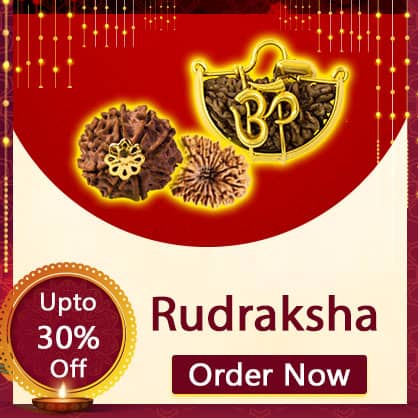Showing posts with label Diwali. Show all posts
Showing posts with label Diwali. Show all posts
Sunday, November 8, 2020
Sunday, November 3, 2013
Lakshmi Puja
Lakshmi Puja is the most important ritual performed on Diwali. It is the third and the main day of Diwali festival. With utmost faith, clear heart and mind, this Puja is performed by all the members of the family to please the Goddess and seek blessings, fortune, wealth and prosperity.
Diwali is a very popular festival in India and is celebrated for a period of five days. In the evening, Lakshmi Puja is performed with a belief that the Goddess will visit the homes of everyone and will bring fortune, wealth and prosperity.
You may also like to read: Importance Of Worshipping Goddess Lakshmi On Diwali
How To Perform Lakshmi Puja
- At the place of Puja, spread a clean cloth and put rice on it creating a bed.
- Place a Kalash (stoup) (filled with water, flower, betel nut and clean coin) on the bed of rice.
- Around the mouth of the Kalash, arrange some mango leaves.
- Place a Thali (plate) on this Kalash.
- Using turmeric powder, draw a lotus on the thali and place the idol of Goddess Lakshmi on it.
- Keep few coins on the plate.
- Place the idol of Lord Ganesha on the right side of the Kalash. Idols of other Gods can also be kept along.
- Close your eyes and chant ‘OM’ in your mind.
- Sprinkle some water on all the puja items.
- Apply Haldi (turmeric) and Kumkum (vermilion) on the Kalash and put a flower on it.
- Light an earthen lamp filled with Ghee.
- Take a flower or flower petals and rice in your hands, close your eyes and meditate on Goddess Lakshmi.
- Sprinkle the flowers or flower petals and rice on the idol of Goddess Lakshmi.
- Now put the idol of Goddess Lakshmi on a Thali. Clean it with water, Ghee, milk, curd, honey and sugar. At last, clean the idol again with water.
- Now, place it back on the Kalash.
- Offer garlands, sandalwood paste, vermilion and light incense sticks.
- Offer coconut, betel nuts, betel leaves, fruits and sweets.
- Now offer Batasha sweets and puffed rice.
- In the end, perform Aarti for Goddess Lakshmi.
If you want to read Diwali Pujan Vidhi in detail, click here - Method Of Diwali Puja & Rituals
Laxmi Mantra
Namosthesthu Maha Maye |
Shree Padee, Sura Poojithe ||
Shanka, Chakra, Gadha Hasthe |
Maha Lakshmi Namosthuthe ||
Kali Puja Celebration
Kali Puja is one of the major festivals of Bengal and is celebrated at a grand scale in Bengal on the day of Diwali. Houses are decorated with colorful rangolis and lamps. In the evening or midnight, people engage in Kali puja to remove the evils and darkness of life. Crackers are bursted in honor of the Goddess. Kali puja is performed to seek the blessings of the Goddess Kali and attain well being and protection.
Click here to read in detail about Kali Puja in Diwali 2013 - Diwali Kali Pujan 2013
Diwali Puja Muhurat
Diwali, the festival of lights and brightness is observed on Kartik Amavasi. Lakshmi Puja is the main aspect of this day and should be performed in the auspicious Muhurat. Read this article to know the accurate Diwali Muhurat for 2013.
This year, the auspicious time for the Lakshmi Puja is from 18:14 to 20:08. This means that during this time period you can worship Goddess Lakshmi and Lord Ganesha. Businessmen should worship Lord Kubera for the growth and profit of their business.
Diwali Muhurat 2013
Muhurat means to select the most auspicious time for doing any activity. The results of new ventures increases when done in the auspicious Muhurat.
Pradosh Kaal for Diwali Puja Muhurat
Pradosh Kaal will last for 2hrs 24 mins from sunset, but will vary from city to city. This difference is due to the reason that Pradosh Kaal is calculated on the basis of sunset and it is different for every region. In Delhi, India Pradosh Kaal may start from 17:34 to 20:13.
This time period is very auspicious for Taurus Ascendant. This Muhurat is good to serve and seek the blessings of elders and honoring relatives and friends. Serving sweets, gifts and clothes will also prove very beneficial for the lives of the natives. Making offerings and donations at religious places like temple, will be very fruitful.
Nishith Kaal for Diwali Puja Muhurat
Nishith Kaal or period is auspicious for worshipping Goddess Lakshmi and planets. Mantras should be recited and donations of clothes, fruits, grains and money should be made to the Brahmins. For the people of Delhi, Nishith Kaal will begin at 20:13 hrs and may last till 22:52 hrs.
Mahanishith Kaal for Diwali Puja Muhurat
Mahanishith Kaal in Delhi will start last from 22:52 to 1:31 and is auspicious for Cancer Ascendant. Diwali Puja during this Muhurat should be done according to the scriptures. During this Kaal, Tantrik rituals and supernatural powers are invited.
We have mentioned the Diwali Muhurat for Delhi, India. The Muhurat for other areas of India will not vary much from the Delhi time. You may consult an astrologer to know the perfect Muhurat in your area.
| Special Event Of The Day: Solar Eclipse (November 3, 2013 - USA) Last Solar Eclipse of 2013 will be observed on 3rd November i.e. on the day of Diwali. This eclipse is not visible in India and will be seen in USA. Partial eclipse will be seen in countries like, Canada, South Africa, UK and in the Middle East. |
Saturday, November 2, 2013
Celebrating The Festival Of Lights
Diwali or Deepavali means a row of lights. It is one of the most beautiful and festive days of the year which falls on Amavasya of the Kartik month. Lighting earthen lamps, worshipping Goddess Lakshmi, mouth watering sweets and fireworks displays this festival. Also, it marks the victory of good over evil.
Wish your family and friends with the best quotes of Diwali- Diwali quotes
Celebration In North India
Uttar Pradesh: In Uttar Pradesh Diwali is all about wearing vibrant colors and enjoying the festival with great enthusiasm. In Varanasi, also known as the land of festivals, religious ceremonies take place on a grand scale. Earthen lamps are lit on the ghats of the city and are then left gently in the river. In other areas of the state, Lakshmi Puja is done religiously and diyas are lighted in every corner of the home. Special sweets and dishes are made in the home and gifts and sweets are exchanged among friends and relatives. Crackers are burnt which fill the sky with colorful light.
Himachal Pradesh: Himachal Pradesh has its unique ways of celebrating Diwali. People clean the mud walls of the house and paint it using white clay and cow-dung. In the courtyard, a black or red is painted using colored clay and is decorated with images of birds and animals. Walls are decorated with garlands of flowers. According to their customs, people here paint little vessels known as Auloo, with clay and decorate it with red paint. These vessels are then prayed and exchanged among the best friends with a belief of strengthening their friendship. Designs are made using rice powder, which is worshipped at night by the young girls using camphor and grass. Goddess Lakshmi is worshipped specially.
Punjab: In Punjab, this day has its importance for two reasons: Diwali celebration and release of Guru Hargobind Ji from prison in 1619 AD. In Amritsar, Golden Temple is decorated with lights and traditional lamps. Earthen lamps are lit around the holy tank. The beauty of the temple increases with its reflection in the shimmering water of the holy pool which is truly mesmerizing. People of the village worship and adorn their cattle on this day thanking them for providing income. Fireworks are also enjoyed by the people.
To send Diwali greetings and wishes to your loved ones, click here- Best Diwali Greeting and Wishes
Celebration In East India
West Bengal: In West Bengal, Diwali is the time for great feasting, celebration and rejoicing. Bengalis decorate and light up their houses with hundreds of diyas at a time. Their Diwali Rangolis are unique, beautiful and very colorful. Entrance of the house is decorated with two or four plantain leaves along with a row of diyas. In the evening Lakshmi Puja in performed by all the members of the family. Diwali is celebrated for three days, but on the final day, the day of worshipping Goddess Kali, the lights and liveliness is reduced. The first two days are celebrated with more enthusiasm with lights, feasting, family gatherings and fire crackers. Nothing new is purchased on the day of Diwali.
Celebration In West India
Maharashtra: Diwali celebrations in Maharashtra commence with 'Vasu-baras'. It is done in the honor of the holy cow which is adored by the Hindu people. Married women worship the cow who is expecting a calf. On the day of Diwali, Lakshmi Puja is performed in the evening to seek her blessings for a prosperous New Year. Mouth-watering delicacies such as Shankar-pale, karanji, chakali, shev, anarse, chirote, chivda, etc are prepared. People hang 'Akash-kandil' and light 'panti's outside their houses and rangolis are made at the entrance of the house. Male members of the family are also worshipped with Aarti done by the women.
Gujarat: In Gujarat, Diwali is known as Badhavsar. Entrance of the house is decorated with powdered rice. Purchasing salt on this day is believed to be very lucky by the people of Gujarat. People love to wear traditional dresses on Diwali with men wearing Dhoti and Kurta and women wearing saris. Visiting temple on this day is considered auspicious.
Celebration In South India
Tamil Nadu: The day of Diwali begins with taking an oil bath by the family members before sunrise and is considered equivalent to taking bath in Ganga. Gingelly oil is applied on the heads of the family members by the elders before the bath. New clothes are worn and sweets are eaten. Traditional sweets and dishes are made in the houses. Kuthu vilakus (oil lamp) are lit in the place of worship. Mats are placed facing the east direction. After making offering to the Gods, fruit is given to the family members along with betel leaves and betel nuts.
Karnataka: Diwali in Karnataka is celebrated with lighting innumerable diyas and bursting crackers. Lakshmi Puja is performed by the family members to please the Goddess of wealth and prosperity. The time for utmost celebration is early morning and late night. Hence people of Karnataka rise early and sleep late on the day of Diwali.
To send Diwali greetings and wishes to your loved ones, click here- Best Diwali Greeting and Wishes
With this word tour of Diwali celebrations, AstroSage wishes a Happy Diwali to one and all!
Friday, November 1, 2013
Dhanteras: Day Of Purchasing Gold And Silver
Dhanteras, the day of purchasing gold, silver and new utensils is observed on the thirteenth day of the Ashwin month. As per the lunar calendar, Dhanteras is derived from Sanskrit language in which Dhan means wealth and Teras means thirteen. This is the first day of Diwali celebration.
What is Dhanteras?
Dhanteras marks the beginning of the festival of lights, Diwali. On this day, precious metals like gold and silver coins and new utensils are purchased with a belief that they will bring prosperity. Dhanteras is also known as Dhanwantri Triodasi or Dhantryaodashi.
Legend of the Day ‘Dhanteras’
The legend of Dhanteras is about King Hima’s sixteen year old son. According to the horoscope of his son, he was fated to die on the fourth day of marriage by a snake’s bite. On the night of the fourth day his wife didn’t let him sleep. In a big heap she laid all her ornaments and gold and silver coins and kept it at the entrance of her husband’s bedroom. She lighted countless lamps all over the place, told stories and sang songs. When the God of death, Yam arrived (in the form of a snake) his eyes were blinded by the sparkling of the brilliant lights and he was unable to enter inside the prince’s bedroom. Thus, he climbed on the ornaments and coins and sat there for the whole night listening to the songs. Next morning he quietly went away. In this way the princess saved the life of her husband. Since then day of Dhanteras is also known as “Yamadeepdaan” and diyas and lamps are kept burning the entire night to adore Yam, the God of death.
Significance of Dhanteras
Dhanteras is devoted to Goddess Lakshmi, the Goddess of wealth. On this day people purchase clay idols of Lord Ganesha and Goddess Lakshmi and perform Lakshmi Puja and light diyas to remove the shadows of evil spirits. A girl born on Dhanteras is believed to be very fortunate, as her birth indicates arrival of Goddess Lakshmi.
Dhanteras Celebration
Dhanteras comes two days before Diwali. Other than purchase of gold and silver articles, people clean and decorate their houses with beautiful Rangoli patterns, colourful lights and light diyas. Footprints of Goddess Lakshmi are also drawn using rice flour and vermilion and lamps are lit for the entire night.
Exchange of Dhanteras gifts is also a very popular aspect of this day. Markets are flooded with Dhanteras gifts. The day of Dhanteras is auspicious for marriage, housewarming, purchasing car and jewelry, commencing new projects and setting up business.
Welcome Goddess Laxmi home this Diwali in the form of blessed gold and silver coins with Ganesh Laxmi murti inscribed on them.
To buy gold and silver coins this diwali, click here- Buy Coin Online
Celebrations Done In Different Regions
In Maharashtra, this day is celebrated as the custom of 'Naivedya'. A mixture of powdered coriander seeds and jaggery is mixed to prepare a traditional sweet which is offered to the Goddess. In Southern India, on the day of Dhanteras, cows are adorned with ornaments and worshipped and are considered to be the reincarnation Goddess Lakshmi.
To know the right time to perform puja or any auspicious event on the day of Dhanteras, make use of our Shubh Muhurat service.
Click here to access it - Shubh Muhurat
Subscribe to:
Comments (Atom)












